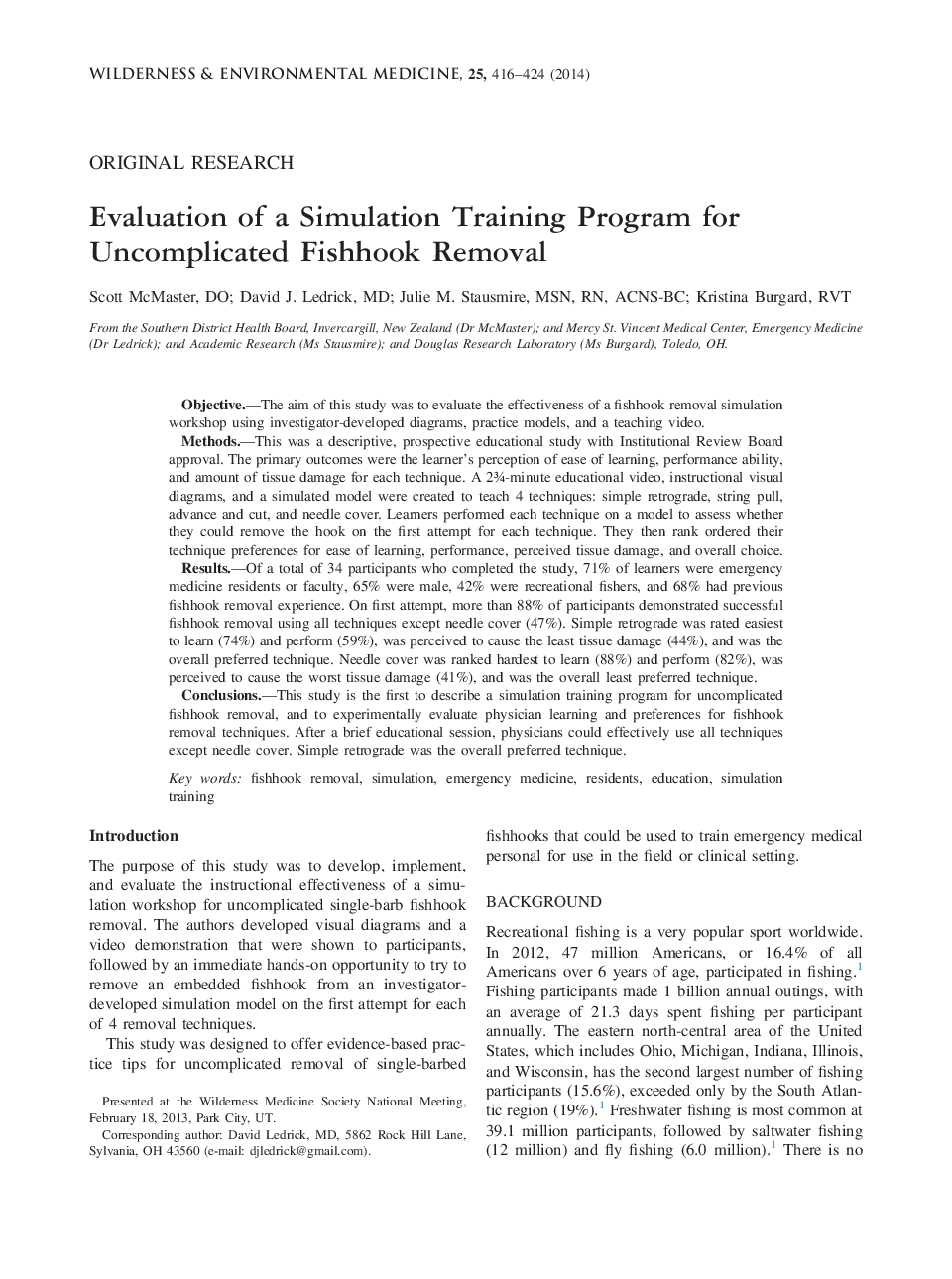| Article ID | Journal | Published Year | Pages | File Type |
|---|---|---|---|---|
| 2613490 | Wilderness & Environmental Medicine | 2014 | 9 Pages |
ObjectiveThe aim of this study was to evaluate the effectiveness of a fishhook removal simulation workshop using investigator-developed diagrams, practice models, and a teaching video.MethodsThis was a descriptive, prospective educational study with Institutional Review Board approval. The primary outcomes were the learner’s perception of ease of learning, performance ability, and amount of tissue damage for each technique. A 2¾-minute educational video, instructional visual diagrams, and a simulated model were created to teach 4 techniques: simple retrograde, string pull, advance and cut, and needle cover. Learners performed each technique on a model to assess whether they could remove the hook on the first attempt for each technique. They then rank ordered their technique preferences for ease of learning, performance, perceived tissue damage, and overall choice.ResultsOf a total of 34 participants who completed the study, 71% of learners were emergency medicine residents or faculty, 65% were male, 42% were recreational fishers, and 68% had previous fishhook removal experience. On first attempt, more than 88% of participants demonstrated successful fishhook removal using all techniques except needle cover (47%). Simple retrograde was rated easiest to learn (74%) and perform (59%), was perceived to cause the least tissue damage (44%), and was the overall preferred technique. Needle cover was ranked hardest to learn (88%) and perform (82%), was perceived to cause the worst tissue damage (41%), and was the overall least preferred technique.ConclusionsThis study is the first to describe a simulation training program for uncomplicated fishhook removal, and to experimentally evaluate physician learning and preferences for fishhook removal techniques. After a brief educational session, physicians could effectively use all techniques except needle cover. Simple retrograde was the overall preferred technique.
